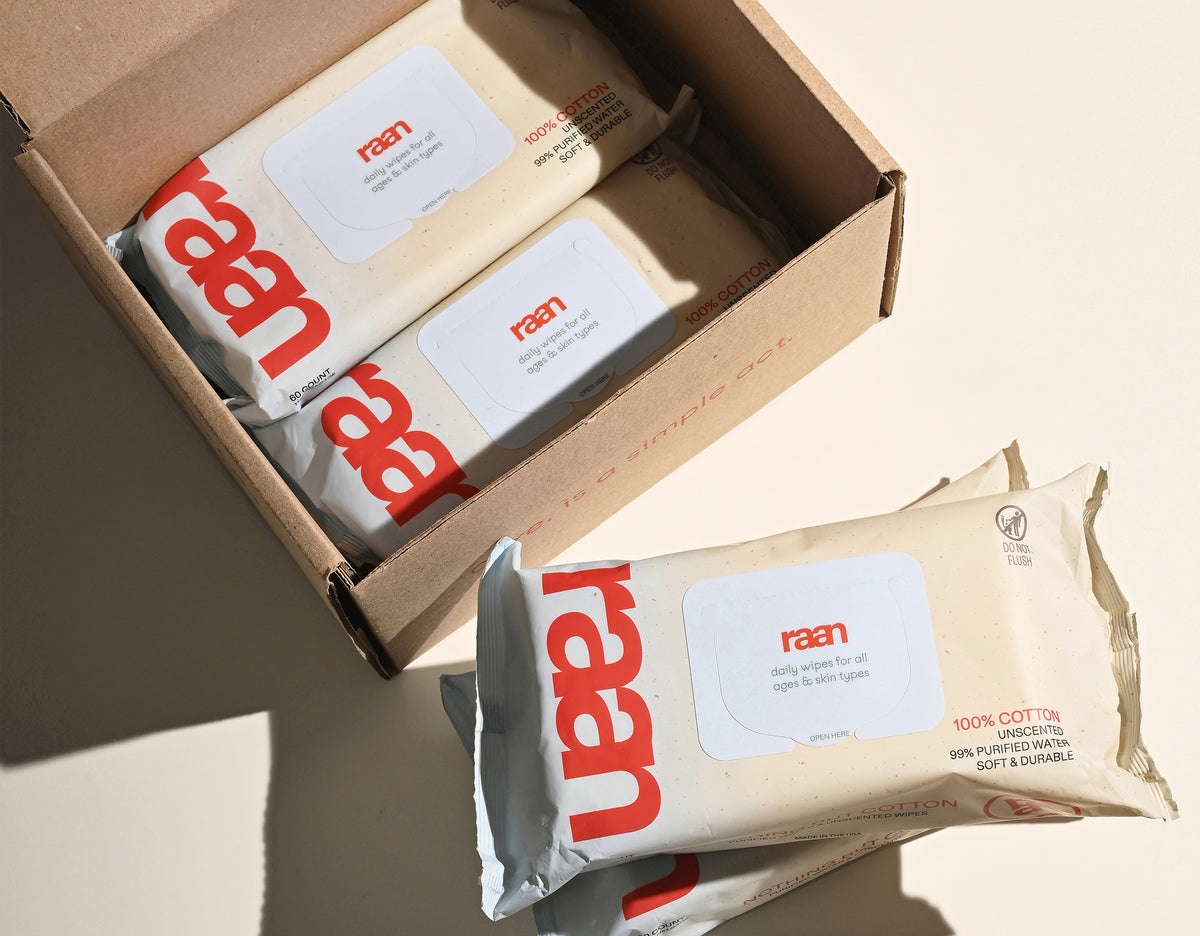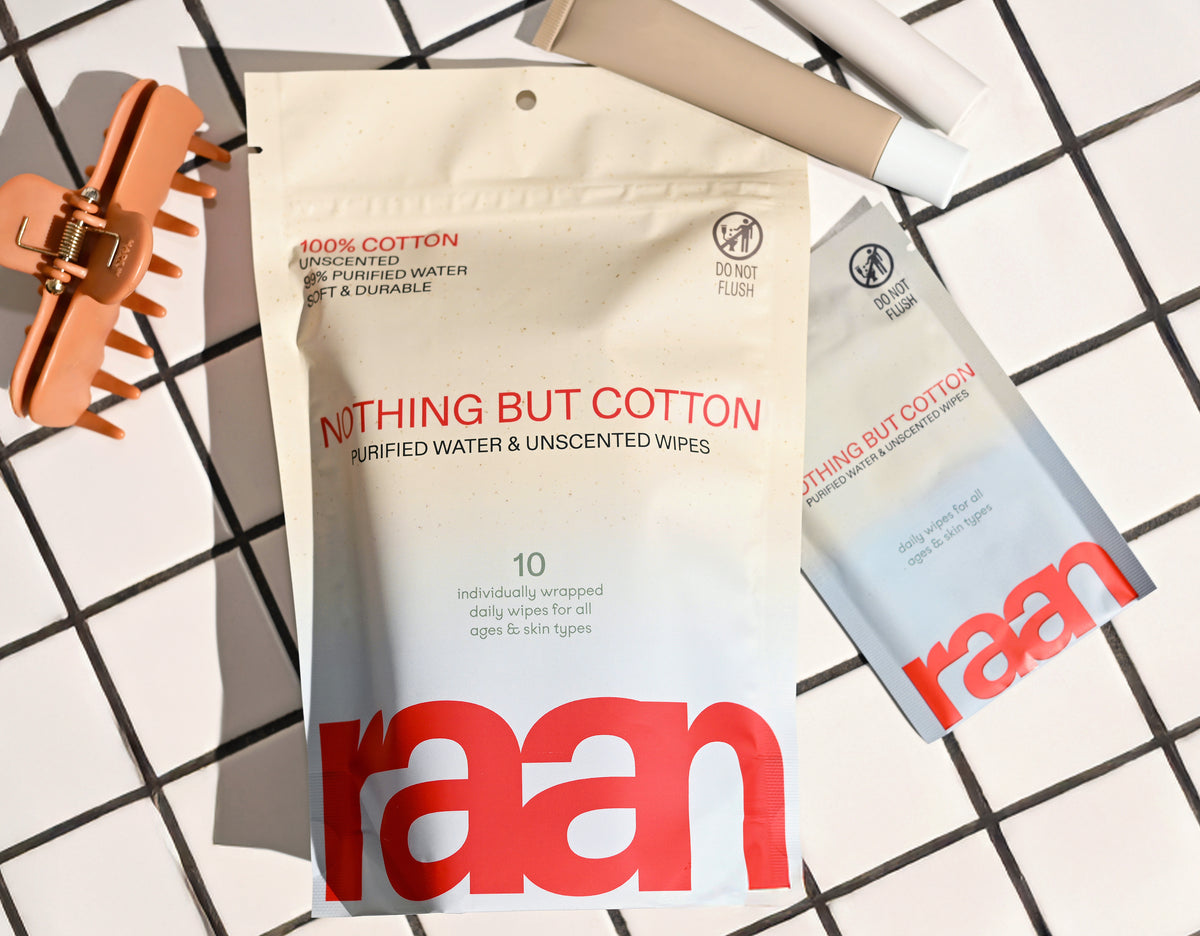Understanding Wipe Needs for Baby's First Year
When you're staring at endless rows of wipes at the store, wondering how many packs to grab, you're not alone. New parents face this question constantly — and the answer isn't as straightforward as you'd think. Between diaper changes, messy meals, and everyday cleanups, wipes become your most-used parenting tool.
Key Takeaways
- New parents often struggle to determine how many wipes to buy for their baby's first year.
- Wipes are essential for diaper changes, messy meals, and everyday cleanups.
- The number of wipes needed varies and is not a straightforward calculation.
- Wipes become one of the most frequently used parenting tools during the first year.
Table of Contents
The reality is that wipe usage varies dramatically based on your baby's age, diet, and individual habits. A newborn having 12 diaper changes daily will blow through wipes faster than a 10-month-old with a more predictable schedule. Add in the fact that not all messes are created equal — some require just one wipe, others need half a pack — and you start to see why planning ahead matters.
But here's what most parents don't realize: the type of wipes you choose affects how many you'll actually need. Thin, synthetic wipes often tear or require multiple sheets for one cleanup. Stronger, more absorbent options like unbleached, 100% cotton wipes handle bigger messes with fewer sheets, potentially reducing your overall usage.
Why Getting the Wipe Math Right Matters
Understanding your wipe needs isn't just about budgeting — though that's important when you're looking at potentially spending hundreds of dollars on wipes in year one. It's about avoiding those panic moments when you're down to your last pack at 2 AM, or realizing you've overstocked and your bathroom looks like a wipe warehouse.
More importantly, it's about choosing wipes that work for your family's specific needs. If you're dealing with sensitive skin, you'll want something gentle enough for frequent use. If you're environmentally conscious, you'll factor in packaging waste and biodegradability. If you're ingredient-focused, you'll want transparency about what's actually in each wipe.
The good news? Once you understand the factors that drive wipe usage — age, mess type, skin sensitivity, and lifestyle — you can make smarter choices about both quantity and quality. You'll know whether to stock up during sales, which pack sizes make sense for your routine, and how to choose wipes that actually work for your family's real, everyday messes.
Let's break down the math, explore what influences your wipe needs, and help you find the right balance between being prepared and being practical.
Calculating Your Wipe Needs: The Real Numbers

The math behind wipe usage is surprisingly straightforward once you understand the variables. Most families use between 1-3 wipes for wet diapers and 3-10 wipes for soiled ones, depending on the mess level and wipe quality. But here's where it gets interesting: the type of wipes you choose dramatically affects these numbers.
Conventional wipes made from synthetic materials often tear or require multiple sheets for one cleanup. In contrast, stronger materials like unbleached, 100% cotton can handle bigger messes with fewer sheets, potentially cutting your usage by 30-40%. This isn't just about saving money — it's about reducing waste and minimizing skin contact with multiple wipes during sensitive cleanups.
Wipe Usage by Age and Stage
Your baby's age is the biggest predictor of wipe consumption. Newborns need frequent diaper changes due to their small bladders and frequent feeding, while older babies develop more predictable patterns. Here's the breakdown:
| Age Range | Diaper Changes/Day | Wipes/Day (Average) | Monthly Usage |
|---|---|---|---|
| 0-2 months | 8-12 | 24-48 | 720-1,440 |
| 3-6 months | 6-8 | 18-32 | 540-960 |
| 7-12 months | 5-7 | 15-28 | 450-840 |
| 12+ months | 4-6 | 12-24 | 360-720 |
These numbers assume a mix of wet and soiled diapers throughout the day. During growth spurts, teething, or illness, expect usage to spike temporarily. Many parents find it helpful to track their actual usage for a week to get a personalized baseline.
Beyond Diaper Changes: The Hidden Wipe Uses
Here's what catches most new parents off guard: diaper changes account for only about 70% of your wipe usage. The remaining 30% goes to cleaning hands, faces, highchairs, car seats, and countless other surfaces. Once babies start eating solids around 6 months, this "extra" usage increases significantly.
Consider these common scenarios that add to your daily wipe count:
- Mealtime cleanups: 2-4 wipes per meal for hands, face, and highchair
- On-the-go refreshes: 1-2 wipes for quick hand cleaning before snacks
- Surface cleaning: 1-3 wipes for toys, strollers, and changing tables
- Parent use: Many families use baby wipes for their own sensitive skin needs
The Quality vs. Quantity Equation
Not all wipes are created equal, and this directly impacts how many you'll need. Thin, synthetic wipes often require 2-3 sheets for what a single high-quality wipe can handle. When you're dealing with 15-40 diaper changes daily, this difference compounds quickly.
Look for wipes that offer:
- Durability: Won't tear during use, reducing waste and frustration
- Absorbency: Handles messes effectively without multiple passes
- Size: Adequate coverage for efficient cleaning
- Gentle strength: Effective cleaning without harsh scrubbing
The ingredient list matters too. Wipes with harsh chemicals or synthetic preservatives can irritate sensitive skin, leading to more gentle wiping and potentially more wipes per cleanup. Food-grade preservatives and simple formulations like purified water, organic aloe, and natural pH balancers provide effective cleaning while being gentle enough for frequent use.
When you factor in the hidden costs of constantly restocking, dealing with skin irritation, and managing waste from low-quality wipes, investing in better materials often saves money and stress in the long run. For more on ingredient safety and skin health, see this authoritative guide on baby wipes.
Smart Stocking Strategies That Actually Work
The key to never running out of wipes isn't buying massive quantities — it's understanding your usage patterns and planning accordingly. Most families benefit from keeping a 2-3 week supply on hand, which typically means 4-6 packs for newborns and 2-4 packs for older babies.
Here's a practical approach that works for busy parents:
- Track for one week: Count actual wipes used daily to establish your baseline
- Stock by location: Keep supplies in nursery, diaper bag, car, and one backup location
- Rotate inventory: Use oldest packs first to prevent drying out
- Plan for spikes: Keep extra packs during illness-prone seasons or growth spurts
Consider subscription services for your baseline needs, but avoid over-committing until you know your family's actual usage. Many parents find their estimates are off by 30-50% in either direction during the first few months.
Choosing Wipes That Reduce Waste
The most sustainable approach isn't necessarily buying the cheapest wipes — it's choosing ones that work efficiently and safely. When you're using thousands of wipes annually, small differences in quality create significant impacts on both waste and cost.
Look for these efficiency markers:
- Minimal ingredient lists: Fewer ingredients mean less processing and gentler formulations
- Food-grade preservatives: Safer for frequent use on sensitive skin
- Reduced plastic packaging: Some brands use 70% less plastic by skipping hard lids
- EWG verification: Third-party testing ensures ingredient safety and transparency
The math is straightforward: if higher-quality wipes reduce your usage by even 25%, you're saving hundreds of wipes monthly while reducing skin exposure to harsh chemicals and synthetic materials. For more tips on choosing the best options, check out best cotton wipes.
Planning for the Unexpected
Every parent faces surprise situations that dramatically increase wipe usage. Teething often brings increased drooling and messier diapers. Starting solids creates new cleanup challenges. Growth spurts can temporarily double diaper changes.
Smart parents prepare for these phases by:
- Keeping emergency supplies: Store unopened packs in cool, dry places
- Diversifying locations: Wipes in car, stroller, and multiple rooms prevent scrambling
- Choosing versatile products: Wipes safe for faces, hands, and surfaces reduce the need for multiple products
- Building buffer time: Reorder when you have 1-2 weeks of supply remaining
The goal isn't perfection — it's having reliable, safe products available when you need them most. If you want to learn more about hygiene routines and related essentials, visit our hygiene products resource.
Beyond the First Year
While this guide focuses on baby's first year, wipe usage doesn't end at 12 months. Many families continue using quality wipes well into toddlerhood and beyond. Potty training, outdoor adventures, and general cleanliness needs keep wipes relevant for years. For additional scientific perspective, see this peer-reviewed article on baby wipes and skin health.
The investment in understanding your family's wipe needs pays dividends long-term. Parents who choose thoughtfully from the start often find they've established routines and products that work for their entire family — not just baby.
Remember: the "right" number of wipes is whatever keeps your family clean, comfortable, and confident. Focus on finding products that align with your values around safety, sustainability, and simplicity. When you're using thousands of wipes annually, these choices matter more than the exact quantity you buy.
The best wipe strategy is one that works consistently for your real life — not an idealized version of parenting, but the beautifully messy, wonderfully imperfect reality of raising a baby.
Frequently Asked Questions
How many wipes should I stockpile?
Stockpiling wipes depends on your lifestyle and frequency of use. For new parents or those caring for toddlers, having around 5 to 7 packs on hand usually covers a month comfortably without overbuying. If you use wipes for multiple purposes—like skincare, pets, or quick clean-ups—adjust accordingly, but avoid excess that might lead to waste or drying out.
How many wipes are normal?
A normal pack of wipes typically contains between 50 and 72 wipes, which balances convenience with freshness. This size works well for everyday use, letting you keep wipes handy without overcommitting to a large quantity that may lose moisture over time.
How long does one pack of wipes last?
How long a pack lasts really depends on your usage habits. For baby care, a single pack might last anywhere from a few days to two weeks. If you’re using wipes for occasional touch-ups or on-the-go refreshes, one pack can stretch several weeks, especially if you reseal the package properly to keep them moist.
How many reusable wipes do I need?
Reusable wipes require a different approach since they’re washable and meant to be used multiple times. For a household with a baby or frequent messes, having around 20 to 30 reusable wipes allows you to rotate through them comfortably between laundry cycles. This number keeps you covered without constant washing or running low.
How many packages of baby wipes do I need for a year?
On average, parents might go through about 3 to 4 packs of wipes per month during the first year, totaling roughly 36 to 48 packs annually. This estimate varies based on your baby’s diapering frequency, other cleaning needs, and whether you use wipes for additional purposes beyond diaper changes.
What diaper size are babies in the longest?
Babies typically spend the most time in size 2 or size 3 diapers, as these sizes cover a broad range of growth from about 12 to 25 pounds. This stage usually lasts several months and involves the highest diaper and wipe usage, making it a key consideration when planning your wipe supply.






